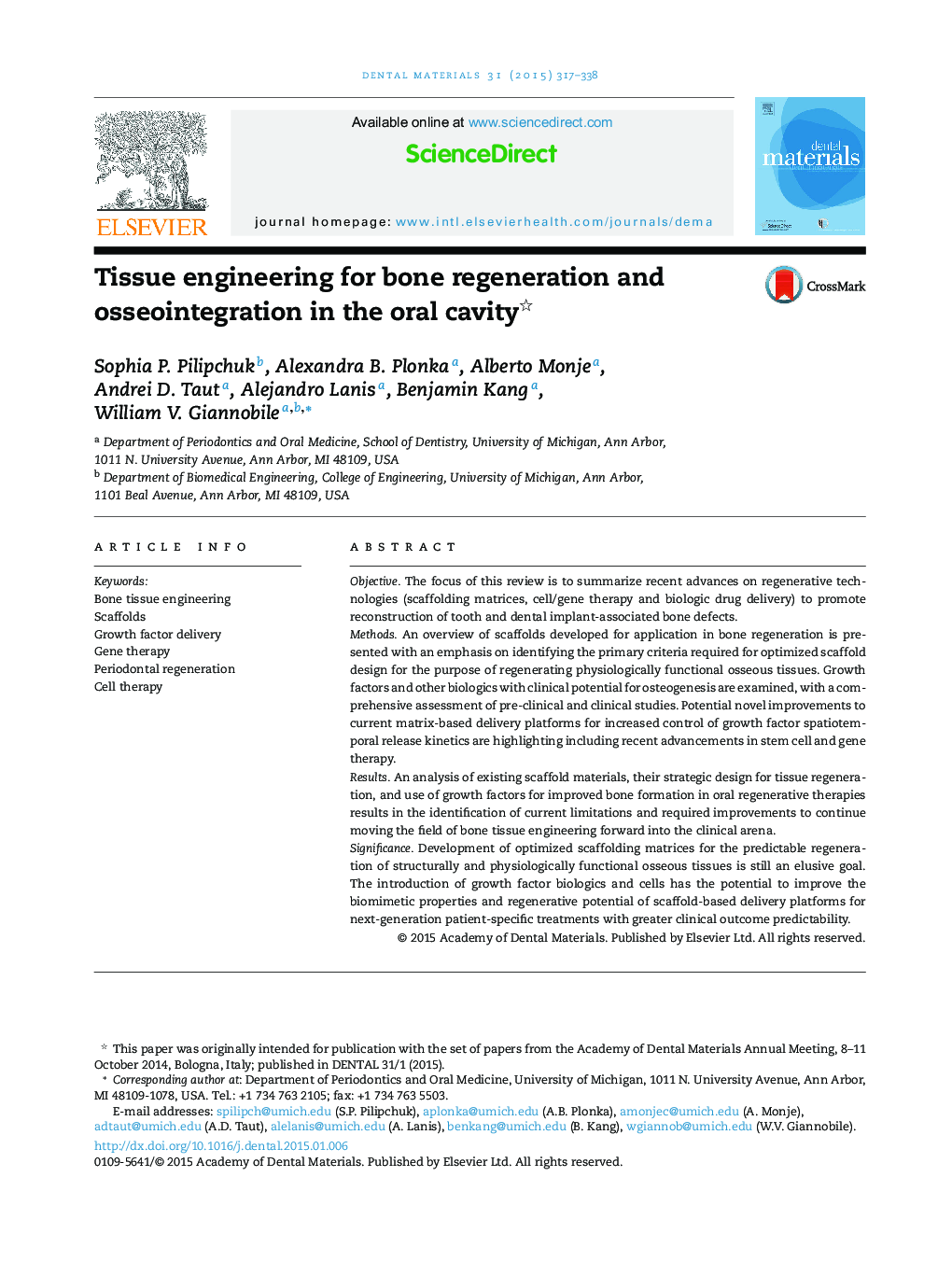| Article ID | Journal | Published Year | Pages | File Type |
|---|---|---|---|---|
| 1420568 | Dental Materials | 2015 | 22 Pages |
ObjectiveThe focus of this review is to summarize recent advances on regenerative technologies (scaffolding matrices, cell/gene therapy and biologic drug delivery) to promote reconstruction of tooth and dental implant-associated bone defects.MethodsAn overview of scaffolds developed for application in bone regeneration is presented with an emphasis on identifying the primary criteria required for optimized scaffold design for the purpose of regenerating physiologically functional osseous tissues. Growth factors and other biologics with clinical potential for osteogenesis are examined, with a comprehensive assessment of pre-clinical and clinical studies. Potential novel improvements to current matrix-based delivery platforms for increased control of growth factor spatiotemporal release kinetics are highlighting including recent advancements in stem cell and gene therapy.ResultsAn analysis of existing scaffold materials, their strategic design for tissue regeneration, and use of growth factors for improved bone formation in oral regenerative therapies results in the identification of current limitations and required improvements to continue moving the field of bone tissue engineering forward into the clinical arena.SignificanceDevelopment of optimized scaffolding matrices for the predictable regeneration of structurally and physiologically functional osseous tissues is still an elusive goal. The introduction of growth factor biologics and cells has the potential to improve the biomimetic properties and regenerative potential of scaffold-based delivery platforms for next-generation patient-specific treatments with greater clinical outcome predictability.
